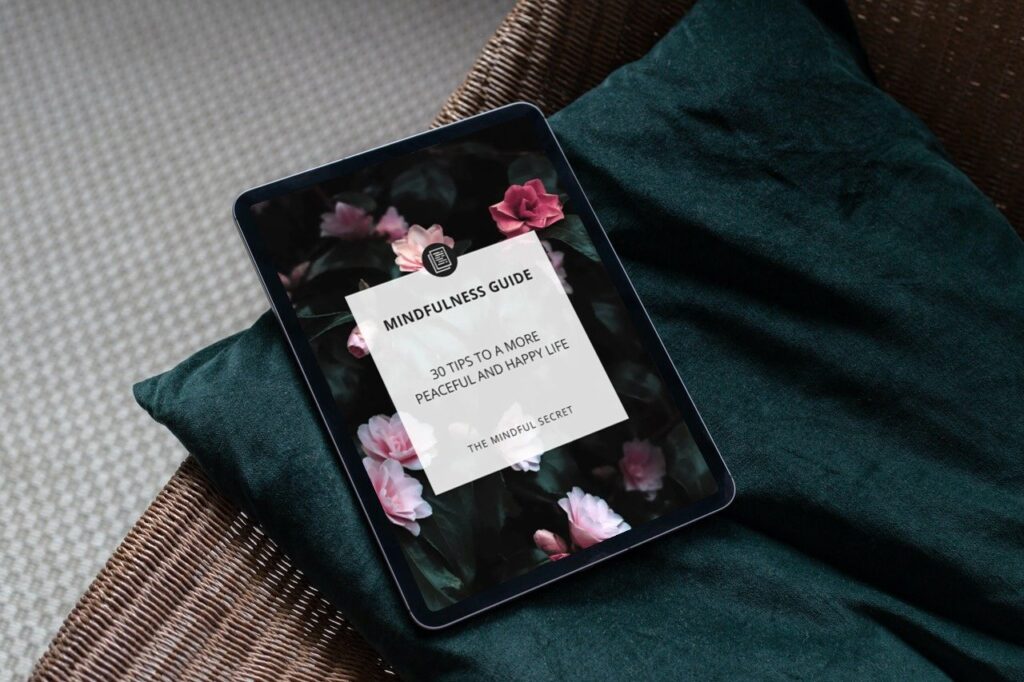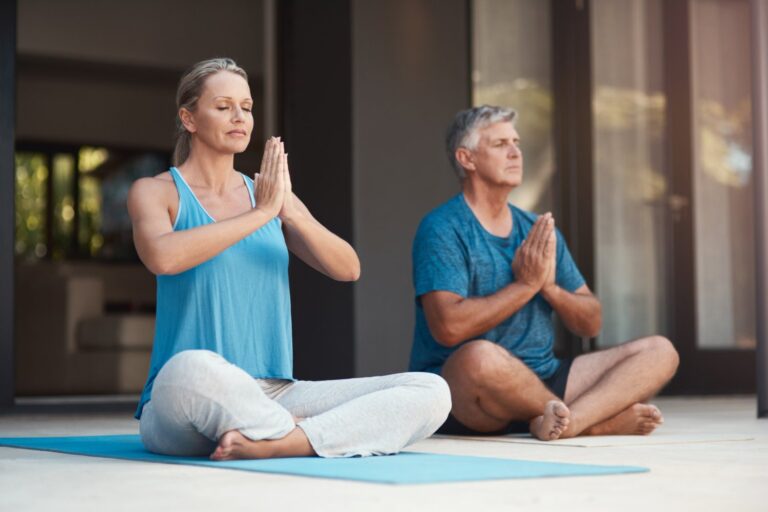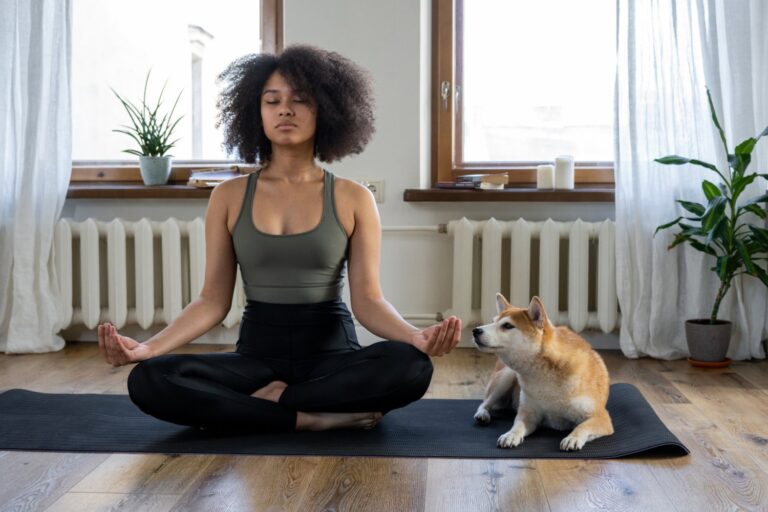How To Practice Mindfulness Meditation
Mindfulness meditation is a practice that can help you learn to focus on the present moment and accept your thoughts and feelings without judgement. This can be helpful in reducing stress and improving your overall wellbeing. In this blog post, we will discuss how to get started and how to practice mindfulness meditation. In addition we’ll give you some tips to help you get the most benefits out of this practice.
What Is Mindfulness Meditation?
Mindfulness meditation has been used for centuries to help people live more peaceful and fulfilling lives. It’s only in quite recent times that mindfulness meditation has become increasingly popular in the western world. However, in the east it has been used by Buddhist monks for around 2500 years. Even though it has roots in Buddhism it’s not a religious practice and can be used no matter ones belief system.
The practice itself is quite simple, though it takes time and practice to master. Mindfulness meditation is about focusing your attention on the present moment. The goal is not to clear your mind of all thoughts. But rather to become more aware of your thoughts and feelings, then letting them pass without judgement. This can be done by paying attention to your breath or focusing on a certain object. The aim is to not get caught up in thinking about the past or future, but rather to just be in the moment.

How To Practice Mindfulness Meditation Step-by-Step
- Find a place where you can sit undisturbed for at least 10 minutes.
- Dedicate this time to set aside your normal mode of operation during the day – that of almost constant doing. Set the intention to switch to a mode of non-doing, a mode of simply being.
- Sit in a posture with a straight back. Either on a chair, or on the floor using a cushion.
- Close your eyes and allow your body to become still.
- Turn your attention to simply notice your breath. Become aware of the movement of the breath, as it comes into your body, and as it leaves your body.
- Don’t try to manipulate or change your breath in any way, just let it flow. Simply be aware of it and of the feelings of breathing.
- Observe your abdominal area as it gently expands on the in-breath, and falls back on the out-breath.
- Aim to bring your awareness to simply being in the moment.
- When any thoughts appear, don’t criticize yourself, simply notice them, and let them pass without following them. While gently bringing your focus back on your breathing.
- Try to stay relaxed and calm while keeping your awareness on your breath for as long as you like. Ideally at least 10 minutes.
- As you come out of the meditation, recognize that you have spent this time intentionally nourishing yourself. You may even congratulate yourself for setting aside this time for allowing yourself a period of non-doing.
This practice is simple to follow, and great both for beginning or deepening your mindfulness meditation practice. It is adopted from guided meditations by Jon Kabat-Zinn. If you would like the benefit of having audio to guide you, then check out Mindfulness for Beginners by Jon Kabat-Zinn. In this audio program, you can follow guided meditations and learn the Seven Key Factors that lead into the essence of Mindfulness-Based Stress Reduction (MBSR). Discover qualities that lay the foundation for mindfulness practice. Also find out how to work compassionately with stress, pain, illness, and sorrow, as well as life’s joys and pleasures.
Guides For How To Practice Mindfulness Meditation
Many people find it difficult to remember the steps when sitting down to practice mindfulness meditation. For this reason, we find guided meditations very helpful. They take you gently through the meditation, so you don’t have to remember the steps while trying to relax your mind. Below are some of our other favorite guided meditation audio programs.
A gentle, step-by-step introduction for newcomers to meditation is Meditation for Beginners by Jack Kornfield. This audio program covers everything from the basics of how to get started to dealing with distractions. It helps you cultivate profound inner calm and a lasting capacity for happiness.
Another very helpful audio program is Room to Breathe by Sharon Salzberg. Here she presents eight essential guided practices along with mindfulness teachings. Including ‘Calming the Mind’ – a technique to help replace anxiety with composure and strength.
You can also look at our Resources page, to find more of our favorite mindfulness resources.
Benefits Of Mindfulness

One of the benefits of mindfulness and meditation is that it can help you to become more aware of your thoughts and feelings, and how they affect your mood and behavior. This can be helpful in managing stress and anxiety, improving mood and sleep, as well as improving your overall wellbeing.
Mindfulness and meditation has also been shown to have some physical benefits. This includes reducing stress hormone levels and increasing immune system function. It can also help to improve heart health. It may even be helpful in preventing or managing conditions such as chronic pain, high blood pressure, asthma, and diabetes.
So if you are looking for a way to reduce stress, improve your mood, or just want to find a way to be more present in your life, then mindfulness meditation may be the answer for you. Give it a try and see for yourself how beneficial it can be!
How To Practice Mindfulness Throughout The Day
There are many different ways to practice mindfulness. A great way is mindfulness meditation, as we have talked about in this article.
Another way to practice mindfulness during the day, when not being able to sit undisturbed, is to focus on your surroundings. Notice the sights, sounds, smells and textures around you. Pay attention to how your body feels as you sit or recline in this space. If your mind starts to wander, simply bring your attention back to your surroundings.
You can also practice mindfulness while you are doing everyday activities, such as walking, eating or even brushing your teeth. As you do these activities, try to focus on the sensations and sensations of the activity. For example, when you are brushing your teeth, pay attention to the taste of the toothpaste, the feeling of the bristles on your teeth and gums, and the sound of the water.
There is no right or wrong way to practice mindfulness. The key is to find a method that works best for you and to be patient with yourself. It may take some time before you are able to focus fully on your breath or surroundings. But with practice, it will become easier.
Conclusion
Mindfulness meditation can be a very beneficial practice, both mentally and physically. It can help you to reduce stress, become more aware of your thoughts and feelings, as well as improve your mood and wellbeing. When we learn to become more present, it helps us enjoy life more.
There are many different ways to practice mindfulness, so find one ore more that works well for you and stick with it. We recommend one of the guided meditations mentioned as a great help towards following a mindfulness meditation routine. With time and patience, you will begin to see the benefits of mindfulness meditation in your life.
So there you have it – our guide on how to practice mindfulness meditation. We hope you found it helpful and that you will give it a try! And be sure to check out our other blog posts on mindfulness and meditation. Thanks for reading, and happy meditating.
If you enjoyed this article, please consider sharing it with your friends or family.

Get Our Mindfulness Guide For Free
“30 Tips To A More Peaceful And Happy Life”
Do you find yourself living in the past or worrying about the future?
Do you ever feel like there is just too much going on and not enough time to take care of what really matters?
If so, mindfulness exercises can help! Mindfulness exercises are a great way to practice living in the moment and become more peaceful. They can even help with stress relief.
This guide will provide you with 30 of the best mindfulness tips and exercises that anyone can do.
When signing up you will also receive our free email newsletter with mindfulness tips, motivational content, and resources. You can unsubscribe at any time. We value privacy and will always protect your email.







